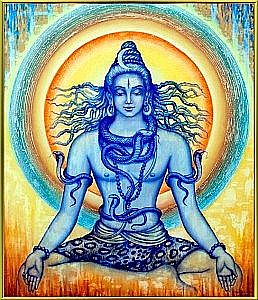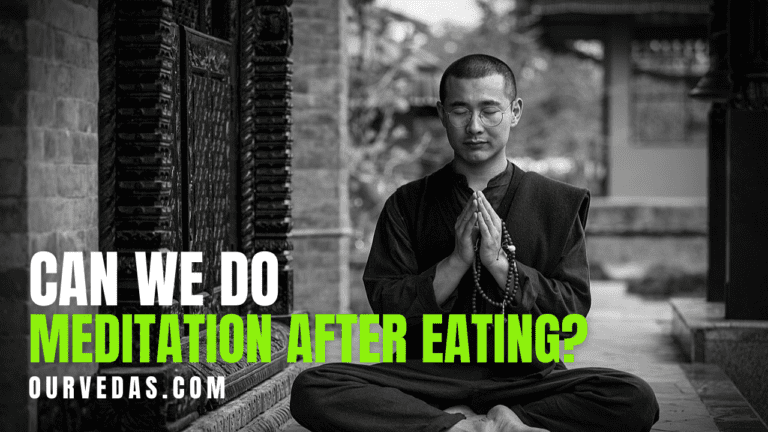Kundalini yoga is often referred to as the “yoga of awareness.” But do you know why Kundalini yoga is dangerous? In recent years, many practitioners have sought out this yoga for its transformative potential. As with any powerful practice, though, kundalini yoga poses risks and dangers that one should be aware of before taking the plunge. It elaborates on the issues with kundalini yoga and discusses whether or not such an exercise causes mental and physical hardships when conducted unassisted and not known thoroughly.
Why Kundalini Yoga Is Dangerous?

Kundalini yoga originates in the old Indian thought system that primarily deals with kundalini energy at the back end of the human spine. It combines physical postures, breath control, meditation, and chants (mantras) to awaken and apply this energy, fostering spiritual growth and self-discovery. The very intensity of the techniques involved in kundalini yoga can also lead to unexpected symptoms if, for example, practitioners are not adequately prepared for those few techniques that may create secondary psychoses.
Psychological Risks in Kundalini Yoga
The significant risks associated with kundalini yoga include its tendency to create very intense psychological experiences. If practitioners deeply immerse themselves in the practice, they can experience an immediate change of consciousness, emotional release, or altered states of awareness. These can be positive and enlightening, but they can also be overwhelming and destabilizing, especially for people with previous mental health problems. Kundalini activation has both positive and negative sides.
- Psychological Overwhelm: There can be feelings of anxiety, fear, or confusion after the sudden awakening of kundalini energy. Practitioners sometimes experience extreme emotional releases that they may be unable to handle correctly.
- Disconnection from Reality: Altered states caused by kundalini practices might disorient some practitioners from their usual lives and prevent them from being functional within their personal or professional surroundings.
For example, if a therapist has a history of trauma or anxiety disorders, intense experiences following kundalini yoga may be associated with symptom exacerbation to the crisis level.
Physical Dangers in Kundalini Yoga
Physical practices in Kundalini yoga were created to improve physical well-being, but they could cause significant problems for the unwary physical well-being.

- Injury from Asanas: Like any other physical exercise, improper alignment or overexertion in yoga poses can lead to injuries. Beginners may not know their physical limitations, leading to strains, sprains, or even more serious conditions.
- Breath Control Practices, or Pranayama. Kundalini exercises can affect a body very heavily. Some even get dizzy because of improper pranayama, hyperventilate and even get panic attacks. Risks are multiplied when people hold their breath longer than they feel comfortable and practice intense pranayama without knowing their limits.
- Detox Symptoms: Kundalini yoga will almost always begin some process of detoxification that leaves a practitioner’s body experiencing head pains, lack of energy, stomachaches, diarrhoea, etc. At the very minimum, this has nothing to do with how healthy or distressed one feels, leaving it open for most practitioners to disregard what is going on within their bodies.
Uncontrollable and Directionless
Unlike other yoga or fitness regimes, kundalini yoga does not standardize teacher training and certification. Thus, instruction varies significantly in quality, putting a risk to those practising who might not understand all the nuances involved.

- Inexperienced Instructors: Inadequately trained instructors may fail to provide the necessary guidance for safely navigating the intense experiences that can arise during sessions. This lack of knowledge can leave practitioners vulnerable to adverse outcomes during their spiritual or physical journey.
- Poor resources: As Kundalini yoga practices become mainstream; some will seek to learn online classes or videos. Such avenues rarely contextualize the meaning of some of these practices and are far less personal than those learned from expert coaches.
Kundalini yoga requires intense spiritual and cultural roots, but the contemporary people who practice these practices do not often respect such a cultural history. There is a risk of misappropriation through their practices.
Practitioners who approach kundalini yoga purely as a fitness regimen may lose sight of its spiritual context and significance. This disconnection can lead to performative practice without genuine understanding, which may be unfulfilling or harmful. When teachings are modified or diluted to match modern stories, practitioners may miss the authentic understanding required to exercise kundalini safely. This risk of diluted teachings can reduce the rewards of the practice and increase its potential dangers.
Benefits and Risks in Balance
While acknowledging the possible risks of kundalini yoga, it should be noted that many practitioners have experienced profound personal growth, healing, and transformation through this practice. The trick is approaching kundalini yoga with respect, caution, and adequate preparation.
- Seeking Qualified Guidance: There should be certified, experienced instructors who can provide the context, safety, and support for the practitioner. This would balance the risk minimization and maximize understanding.
- Self-Awareness and Mindfulness: Potential practitioners must reflect upon and be honest about their physical and mental health before diving into kundalini yoga. Recognition of their limitations and awareness of their body and emotions can prevent them from falling into adverse experiences.
An integrative approach, such as incorporating kundalini yoga into therapy or mindfulness training, might offer a structure to support someone in dealing with overwhelming experiences and emotions.
Conclusion: Why Kundalini Yoga is Dangerous?
Kundalini yoga is thus an excellent opportunity for self-exploration and personal change; however, practising it with sensitivity to the threats it may raise helps it. Understanding the possible psychological and bodily risks, ensuring one acquires qualified instruction, and staying mindfully alert as one proceeds throughout the journey enable safer practice. As long as practitioners are educated towards a balanced path, they could enjoy the opportunities of kundalini yoga while keeping minimal risks that have threatened transformation, a process in supportive and constructive forms.







